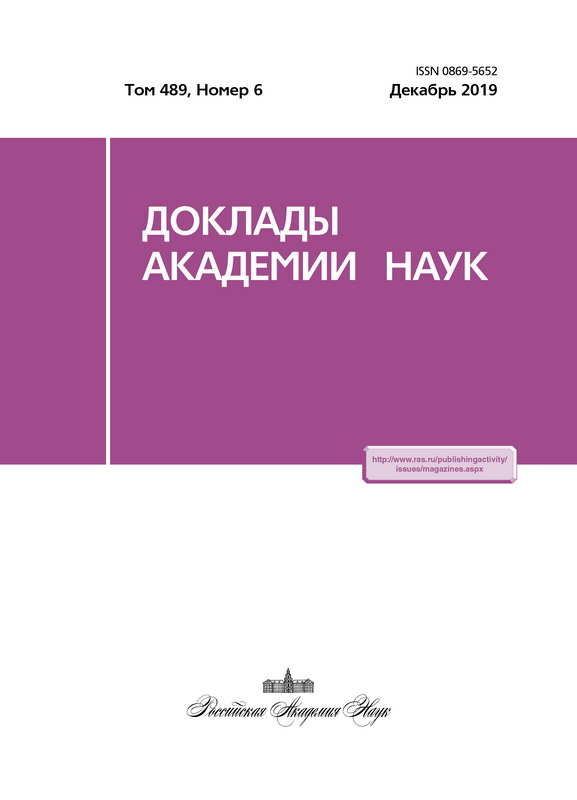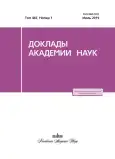Аутигенные карбонаты голоценовых осадков озера Иткуль (юг Западной Сибири) - индикаторы изменений климата
- Авторы: Солотчина Э.П.1, Кузьмин М.И.2, Солотчин П.А.1, Мальцев А.Е.1, Леонова Г.А.1, Даниленко И.В.1
-
Учреждения:
- Институт геологии и минералогии имени В.С. Соболева Сибирского отделения Российской академии наук
- Институт геохимии имени А.П. Виноградова Сибирского отделения Российской академии наук
- Выпуск: Том 487, № 1 (2019)
- Страницы: 54-59
- Раздел: Геология
- URL: https://journals.eco-vector.com/0869-5652/article/view/15383
- DOI: https://doi.org/10.31857/S0869-5652487154-59
- ID: 15383
Цитировать
Аннотация
Представлены результаты исследования карбонатсодержащих донных осадков малого минерального озера Иткуль (Западная Сибирь). Методы исследования - рентгеновская дифрактометрия (XRD), ИК‑спектроскопия, лазерная гранулометрия, элементный анализ и др. Моделированием XRD-профилей карбонатов функцией Пирсона VII идентифицированы карбонатные фазы, определены их количественные соотношения. Сопоставлением карбонатной записи с литологическими, геохимическими данными в датированном осадочном разрезе воссоздана эволюция озёрного бассейна в голоцене, обусловленная климатическими изменениями. Зафиксированы минералогические сигналы проявления на территории юга Западной Сибири глобального климатического события, известного как событие Бонда 4.
Ключевые слова
Об авторах
Э. П. Солотчина
Институт геологии и минералогии имени В.С. Соболева Сибирского отделения Российской академии наук
Автор, ответственный за переписку.
Email: solot@igm.nsc.ru
Россия, 630090, г. Новосибирск, пр-т акад. Коптюга, 3
М. И. Кузьмин
Институт геохимии имени А.П. Виноградова Сибирского отделения Российской академии наук
Email: solot@igm.nsc.ru
Академик РАН
Россия, 664033, г. Иркутск, ул. Фаворского, 1а, п/я 9П. А. Солотчин
Институт геологии и минералогии имени В.С. Соболева Сибирского отделения Российской академии наук
Email: solot@igm.nsc.ru
Россия, 630090, г. Новосибирск, пр-т акад. Коптюга, 3
А. Е. Мальцев
Институт геологии и минералогии имени В.С. Соболева Сибирского отделения Российской академии наук
Email: solot@igm.nsc.ru
Россия, 630090, г. Новосибирск, пр-т акад. Коптюга, 3
Г. А. Леонова
Институт геологии и минералогии имени В.С. Соболева Сибирского отделения Российской академии наук
Email: solot@igm.nsc.ru
Россия, 630090, г. Новосибирск, пр-т акад. Коптюга, 3
И. В. Даниленко
Институт геологии и минералогии имени В.С. Соболева Сибирского отделения Российской академии наук
Email: solot@igm.nsc.ru
Россия, 630090, г. Новосибирск, пр-т акад. Коптюга, 3
Список литературы
- Last W.M. // Geosciences J. 2002. V. 6. № 4. P. 347-369.
- Deocampo D.M. // Develop. Sedimentol. 2010. V. 62. P. 1-59.
- Solotchina E.P., Prokopenko A. A., Kuzmin M. I., Solotchin P. A., Zhdanova A. N. // Quatern. Int. 2009. V. 205. P. 38-52.
- Солотчина Э.П., Скляров Е.В., Страховенко В.Д., Солотчин П.А., Склярова О.А. // ДАН. 2015. Т. 461. № 5. С. 579-585.
- Solotchina E.P., Sklyarov E. V., Strakhovenko V. D., Solotchin P. A., Sklyarova O. A. // Doklady Earth Sciences. 2015. V. 461. № 2. P. 394-400.
- Solotchina E.P., Bezrukova E. V., Solotchin P. A., Shtock O., Zhdanova A.N. // Rus. Geol. and Geophys. 2018. V. 59. № 11. P. 1419-1432.
- Страхов Н. М. Основы теории литогенеза. М.: Изд-во АН СССР, 1962. Т. 1. 212 с.
- Солотчина Э. П. Структурный типоморфизм глинистых минералов осадочных разрезов и кор выветривания. Новосибирск: Гео, 2009. 234 с.
- Нечипоренко Г.О., Бондаренко Г. П. Условия образования морских карбонатов. М.: Наука, 1988. 132 с.
- Deelman J. C. Low-Temperature Formation of Dolomite and Magnesite. Open-access e-book. 2011. 512 p. http://www.jcdeelman.demon.nl/dolomite/bookprospectus.html.
- Solotchina E.P., Solotchin P. A. // J. Struct. Chem. 2014. V. 55. № 4. P. 779-785.
- Goldsmith J.R., Graf D. L. // Amer. Miner. 1958. V. 43. P. 84-101.
- Bond G.C., Shower S.W., Cheseby M., et al. // Science. 1997. V. 278. P. 1257-1266.
Дополнительные файлы








